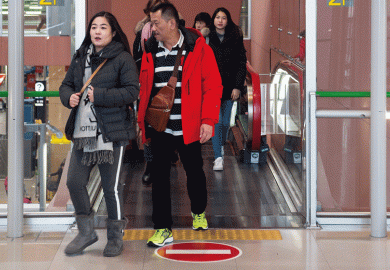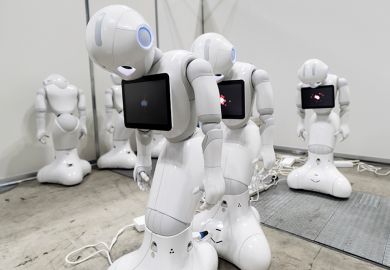When a group of Japanese educators floated the idea of a revolutionary, highly globalised university in the mid-1990s, they were met with a potent mixture of rejection and derision.
Eventually, however, their persistence paid off when the Ritsumeikan Trust – associated with the century-old Ritsumeikan University in Kyoto – opened an experimental campus in 2000 with the aspiration of having half of all students and staff come from overseas, a level of internationalisation far beyond what had been achieved in the country before.
So was born Ritsumeikan Asia Pacific University (APU), in the small city of Beppu in the southwest of Japan, which will celebrate its 20th anniversary next month having achieved two goals: an even split between domestic and foreign faculty and students; and an even split between English and Japanese instruction. According to Times Higher Education’s university rankings data, 52.4 per cent of APU’s students are international, a far higher proportion than elite institutions such as the University of Tokyo (12 per cent) and Kyoto University (9 per cent).
“They [APU’s founders] decided to start fresh, with a blank slate,” Yuichi Kondo, APU’s dean of admissions, told THE. “They were told it would fail and that they were out of their minds. It was a new idea and something outside the box.”
APU is now facing its biggest challenge to date because its international nature leaves it particularly vulnerable to the turmoil caused by the spread of coronavirus. As more than 90 per cent of its students come from outside its prefecture, it was the first Japanese institution to cancel in-person events and lectures because of the pandemic.
Nevertheless, APU has expansion in mind and plans to open a third college in 2022 dedicated to sustainable tourism and regional development. It is also aiming to reduce teaching workloads in order to buoy quality and research and to improve diversity among its international student body, which is still primarily Asian. South Korea provides the university with the highest number of overseas students, followed by Indonesia and China.
Professor Kondo, who manages one of the largest international student recruitment teams in Japan, said he remained optimistic about attracting international students. APU is utilising branch offices overseas and beginning to use agents, “but very carefully”, he explained.
“We’re the only ones offering this unique multicultural experience in Japan,” he said. “If you walk five minutes across campus, you can hear 10 or 15 different languages.”
APU's entire system, from admissions to classroom teaching, is designed to be multilingual. Because most Japanese students lack conversational English skills, and most foreign students speak almost no Japanese, APU has had to embrace language immersion for both groups.
All freshmen must take intensive second-language instruction, while almost all classes are offered in both Japanese and English. This method was “difficult and complex” to manage, Professor Kondo admitted, but it was also “the only way” to achieve bilingualism.
Campus living is required for all new foreign students and is chosen by 70 per cent of Japanese students. Unlike in some other Asian countries, which have separate dorms for foreigners, APU uses fully mixed residences to encourage 24/7 interaction.
Professor Kondo, who did his PhD in speech communication at the University of Minnesota, said the APU experience was not one “where international students largely sit on one side and local students [sit] on the other”.
Jerry Pietrzak, APU’s media and communications manager, said that being in a smaller city such as Beppu helped with integration, especially when compared with a metropolis like Tokyo.
“When foreign students go downtown, there’s no expat enclave to go to,” said Mr Pietrzak, who is originally from the US. “Because foreign students are allowed to work in Japan, many have part-time jobs in local restaurants or shops. Sometimes Japanese grandmas and grandpas will sit down and talk with me on the bus, and it’s not to ask: ‘Do you speak Japanese?’ or ‘Do you use chopsticks?’
“Over 20 years, APU has also made Beppu more international,” he added.
Haruaki Deguchi, APU’s president, said local ties were vital in keeping APU alive. “If Kyushu [the island on which APU is located] is not thriving, then it stands to reason that APU will not thrive,” he said.
Much like his institution, Mr Deguchi himself has a somewhat unconventional background, having spent much of his career as an insurance executive.
“Whether you are leading a company or a university, the basics are the same,” he said. “The experience I gained and the things I learned there have been an invaluable resource in setting a direction for the university.”
POSTSCRIPT:
Print headline: Japan’s island of diversity hits 50% foreign enrolments
Register to continue
Why register?
- Registration is free and only takes a moment
- Once registered, you can read 3 articles a month
- Sign up for our newsletter
Subscribe
Or subscribe for unlimited access to:
- Unlimited access to news, views, insights & reviews
- Digital editions
- Digital access to THE’s university and college rankings analysis
Already registered or a current subscriber?







